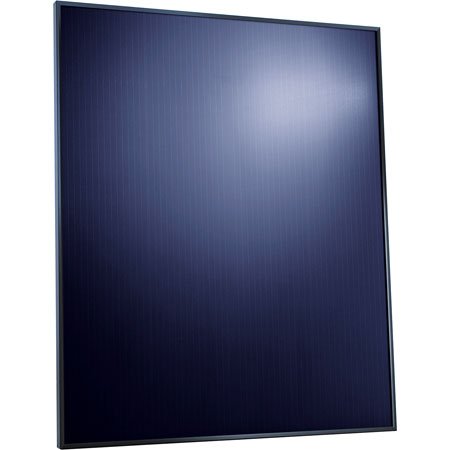Thin Film Solar in Sydney

Background to thin film solar panels
Whilst most residential installations are done with crystalline solar modules (the familiar 1.6m x 0.8m rectangular modules with white back sheet and black pseudo square cells), sites with larger available space and good access can take advantage of thin film solar panels.
Thin film panels generally provide the following benefits:
- better performance under higher levels of heat;
- higher peak output than crystalline in the first few years, compared to panels of the same Wp rating;
- higher overall energy delivered over a day of sunlight;
- better performance in low light and non-incident light conditions; and
- lower embodied energy levels, reduced requirement for silicon & less refining requirements.
Four key types of thin film solar modules
The four main subclasses of thin film panels are:
- Amorphous panels (aSi) – lowest cost, needs largest area, well understood. Made by Schott, QCells, Kaneka, Schuco, amongst others. Schott Solar aSi panels and Schuco modules are available from Greenforce Energy.
- Micromorph/Tandem panels (μSi)- more efficient than aSi modules, tandem panels (sometimes known as micro-crystalline modules) incorporate both amorphous and crystalline layers, to enhance the efficiency whilst retaining the heat benefits of amorphous silicon. Made by Mitsubishi and Schuco, and available in Sydney from Greenforce.
- Cadmium Telluride (CdTe) – This technology is quite old, but was dropped by major manufacturers, such as BP Solar, in the 1990s due to the toxicity. However, is enjoying a resurgence as part of the First Solar range, who claim to offer an end-of-life recovery program. Not available from us.
- CIS/CIGS – The name CIGS comes from the fact its absorber is a solution of composed of copper, indium, gallium, and selenium. These panels are comparable to micromorph panels in efficiency, but have the potential in the future to exceed the efficiency of most other types, because of the electrical properties of CIGS, which in theory can absorb light better than silicon. The CIGS semiconductor has very strong light absorption and a lay of merely 1–2 micrometers of CIGS is sufficient to absorb a reasonable amount of light energy. A much greater thickness of crystalline silicon is required for the same absorption, although with tradition cells there are physical limitations as well. Q Cells retails these in Australia, and they are available by special order through Greenforce.
When considering thin film alternatives, we recommend micromorph and amorphous solutions, as these are high performing and mature technologies respectively.
Use the services below to share with your friends:
